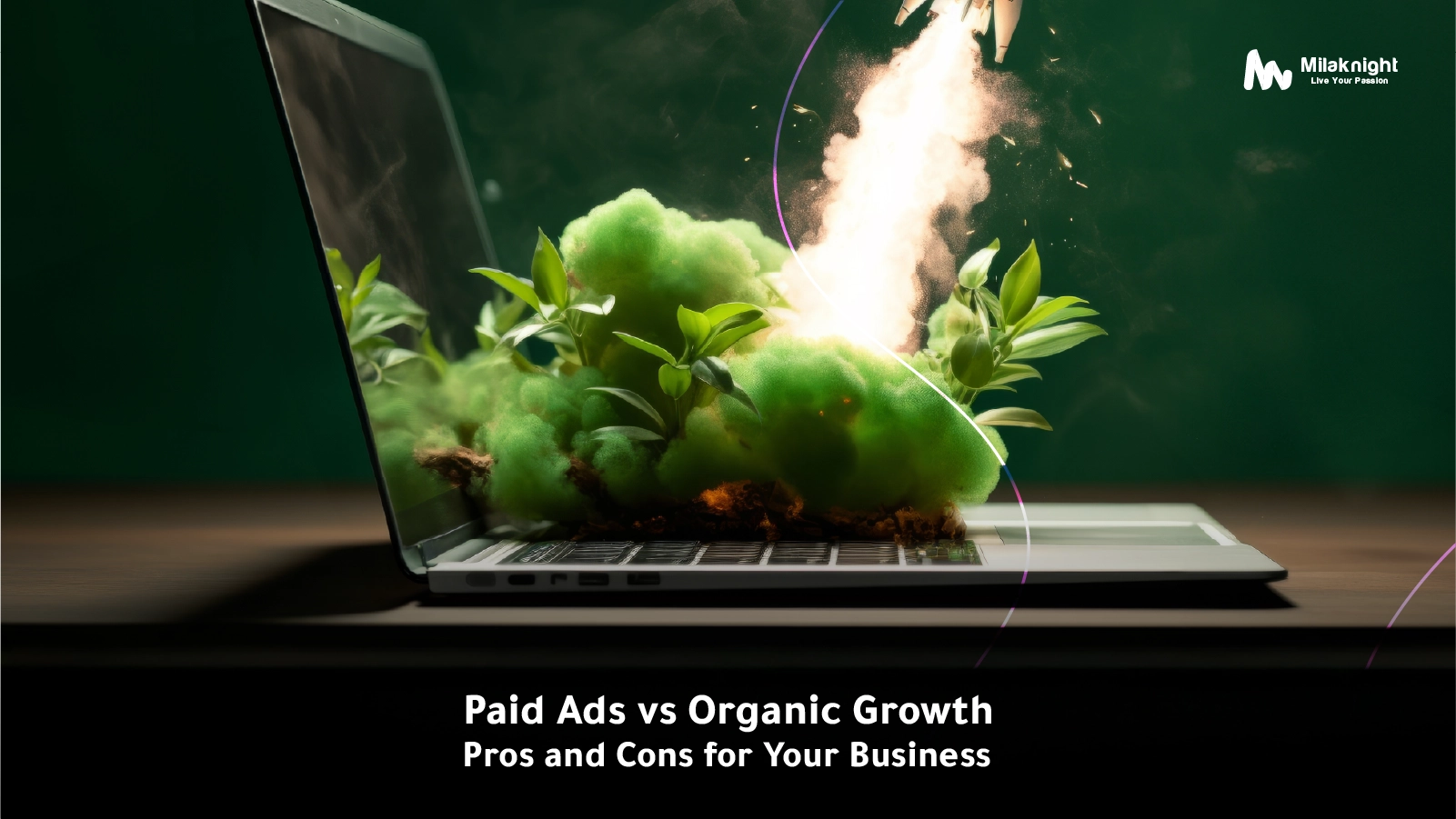Nearly five billion people—around 60% of the world's population—use the internet to research or purchase products and services.
To effectively reach this vast audience, businesses must actively drive traffic to their websites and social media platforms. There are two primary methods to achieve this: paid advertising and organic growth.
While the debate between paid and organic marketing continues, experts agree that a balanced digital strategy should incorporate both. Paid advertising helps businesses reach specific audiences quickly, whereas organic marketing focuses on building long-term relationships with potential customers.
Let’s dive deeper into the differences between these two approaches.
What Is Organic Advertising?
Organic advertising is a marketing approach that enables brands to boost awareness, foster relationships, and drive traffic without relying on paid promotions. It focuses on attracting potential customers naturally, rather than through direct advertising spend.
This strategy leverages free online marketing techniques to capture audience attention and encourage interaction. Some key methods include:
- Blog content published on your website
- User-generated content (e.g., reviews and testimonials)
- Guest posts on authoritative websites
- Backlinking strategies
- Search engine optimization (SEO)
- Social media optimization (SMO)
- Unpaid social media posts
Is Organic Advertising Truly Free?
While organic advertising doesn’t require direct payments to platforms like search engines or social media sites, it still demands time, expertise, and resources. Creating high-quality content, optimizing it for search visibility, and maintaining active audience engagement all require a strategic investment.
For example, producing compelling blog posts and ensuring they rank well on search engines can be time-intensive. Similarly, interacting with followers and forming relationships with influencers takes continuous effort.
Ultimately, organic marketing may not involve direct costs, but it does require dedication and long-term planning to yield sustainable results.
What Is Paid Advertising?
Paid advertising is a digital marketing strategy where businesses invest in promoting their content through social media platforms and search engines. These paid ads are strategically placed at the top of search results or within social media feeds to increase visibility and reach a targeted audience.
One of the most common forms of paid advertising is PPC (pay-per-click), where advertisers pay a fee each time a user clicks on their ad.
Other popular paid advertising methods include:
- Google Ads – Sponsored search results that appear above organic listings.
- Paid Social Media Ads – Promotional posts on platforms like Facebook, Instagram, LinkedIn, and Twitter.
- Remarketing Ads – Targeted ads shown to users who have previously interacted with a brand’s website or content.
The difference between Paid Ads and Organic Growth
The main difference between paid advertising and organic growth lies in their methods and outcomes. Paid ads provide immediate visibility by targeting specific audiences through paid placements, while organic growth centers on long-term engagement by attracting users naturally through valuable and relevant content.
Benefits of Organic Marketing:
- Cost-Effective: There’s no need for direct spending on advertisements.
- Sustainable: A well-optimized website can maintain high search rankings over time.
- Stable: Organic rankings tend to be more consistent and less affected by fluctuations compared to paid campaigns.
Challenges of Organic Marketing:
- Takes Time: Organic results can take several months to materialize.
- Ongoing Effort: It requires continuous content updates and ongoing SEO efforts to maintain growth.
Benefits of Paid Advertising:
- Instant Results: Paid ads drive traffic and conversions quickly, providing immediate visibility.
- Complete Control: Advertisers have full control over their budget, targeting, and ad placements.
Challenges of Paid Advertising:
- Higher Costs: Paid ads require continuous financial investment.
- Short-Term Impact: Once the campaign ends, the traffic generated by paid ads stops immediately.
Comparing Paid Ads and Organic Growth: Examples and Useful Applications
Here’s a table that includes examples and useful applications for both Paid Ads and Organic Growth:
| Aspect | Paid Ads | Organic Growth |
|---|---|---|
| Examples |
Google Ads: Pay-per-click
search ads that appear at the
top of search results.
Facebook/Instagram Ads:
Sponsored posts and stories
targeted to specific demographics.
LinkedIn Ads: Targeted ads
on LinkedIn for B2B
marketing.
Remarketing Ads: Ads shown
to users who have previously
visited your site.
|
SEO (Search Engine
Optimization): Optimizing content to
rank organically on search engines.
Blogging: Writing
informative, high-quality articles
that attract organic traffic.
Social Media Optimization
(SMO): Engaging with users
and posting content regularly on social platforms.
YouTube Content: Creating
and optimizing videos to
appear in organic search results.
|
| Useful Applications |
Google Keyword Planner:
Tool for finding the right
keywords for PPC campaigns.
Facebook Ads Manager:
Platform for creating and
managing paid social media ads.
Bing Ads: Paid
advertisements on the Bing search
engine.
AdRoll: A platform for
retargeting and running display
ads across the web.
|
Google Analytics: Tracks
website performance and
provides insights for SEO improvements.
Yoast SEO: A WordPress
plugin to optimize your blog and
website for better search rankings.
Hootsuite: Social media
scheduling tool to plan posts
and monitor engagement for organic growth.
SEMrush: A tool to analyze
competitors and enhance SEO
strategies.
|
Conclusion:
There is no universal solution when it comes to choosing between paid and organic marketing. For startups or businesses aiming for quick sales, paid ads are a great option. However, if your goal is to build authority and drive sustainable, long-term traffic, organic marketing is the ideal choice.
For optimal results, it’s best to combine both strategies. Leverage paid ads to gain immediate exposure and use organic methods to secure lasting results. This approach will enhance short-term success while establishing a foundation for long-term growth.
